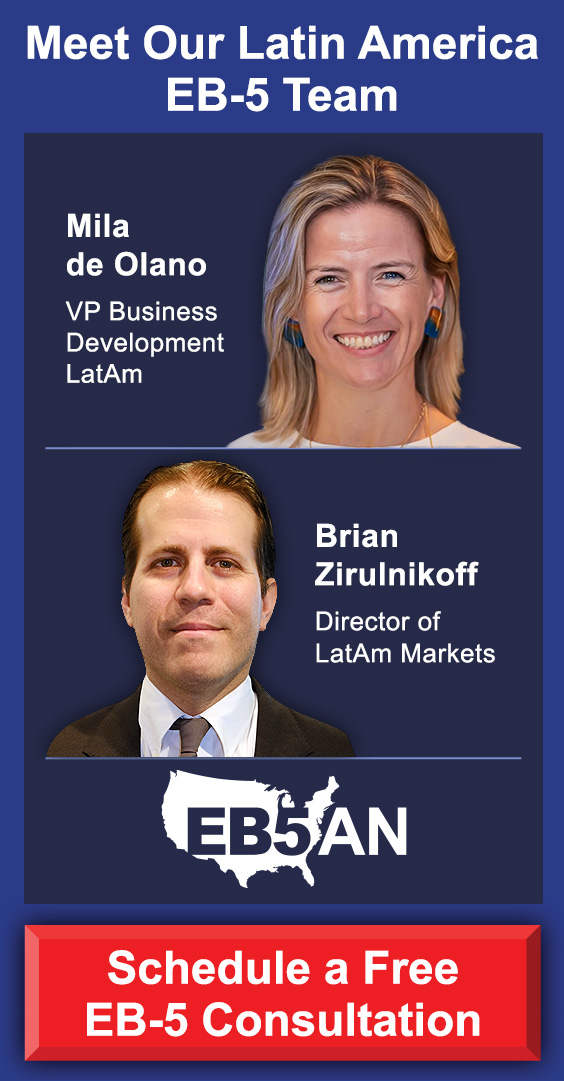For many international investors, the EB-5 Immigrant Investor Program offers a compelling pathway to U.S. permanent residency, combining immigration opportunity with a qualified investment in the American economy. However, the journey through the EB-5 process is far from simple. From identifying a viable investment to navigating regulatory hurdles and ensuring compliance, each step demands meticulous attention to detail and informed decision-making.
In recent years, artificial intelligence (AI) has emerged as a powerful tool in financial services, real estate, and immigration law. For EB-5 investors, AI offers the ability to streamline due diligence, assess risk more accurately, and stay informed throughout the lifecycle of their investment. Below, we explore how AI can enhance every phase of the EB-5 journey, from project selection to Green Card approval.
Finding the Right Investment
Evaluating Regional Centers With Greater Clarity
Streamlining Due Diligence and Risk Assessment
Financial Modeling and Exit Strategy Evaluation
Supporting a Stronger Immigration Petition
Post-Approval Planning and Life in the U.S.
A Smarter, Safer EB-5 Journey
Finding the Right Investment
One of the most critical early decisions an EB-5 investor makes is choosing the right project. The selected project must not only satisfy USCIS requirements for job creation and capital investment but also minimize financial and immigration risks.
Traditionally, project vetting has relied heavily on third-party reports and assessments. AI introduces a more data-driven approach. By aggregating information from public records, historical project data, economic indicators, and real estate trends, AI platforms can provide a comprehensive view of a project’s viability. Some tools use predictive modeling to estimate the likelihood of job creation or identify early signs of project delays based on market behavior and developer history.
AI also enhances transparency. Natural language processing (NLP) algorithms can parse offering documents and detect clauses that may pose legal or financial risks, flagging unusual terms that merit closer scrutiny. This not only accelerates the due diligence process but helps investors make better-informed decisions from the outset.
Evaluating Regional Centers With Greater Clarity
Regional centers act as key facilitators in the EB-5 process, sponsoring projects and managing investor capital. However, their quality varies significantly. Some have a strong track record of successful project execution and petition approvals, while others may carry a history of delays, litigation, or even fraud.
With AI-powered tools, investors can analyze regional centers more objectively. Algorithms can scan court records, regulatory filings, and investor reviews to create reputation scores. Furthermore, performance metrics such as I-526E and I-829 approval rates, project completion timelines, and job creation accuracy can be synthesized into easy-to-read dashboards that compare regional centers side by side.
Streamlining Due Diligence and Risk Assessment
Once a project and regional center are identified, investors must dive deeper into due diligence. This step can be exhaustive, involving economic impact reports, business plans, job creation models, and securities disclosures.
AI simplifies and enhances this process in several ways. For instance, document intelligence tools can extract and summarize key insights from hundreds of pages of technical documents. Instead of manually cross-checking every claim, investors can use AI to verify numbers, identify inconsistencies, and assess risk levels based on historical benchmarks and regulatory expectations.
Financial Modeling and Exit Strategy Evaluation
While many EB-5 investors prioritize immigration outcomes, the financial aspects of the investment still matter. Understanding potential returns, exit strategies, and liquidity risk is crucial, particularly because EB-5 funds are often locked up for several years.
AI-powered financial modeling tools can simulate different economic scenarios, helping investors understand the likely outcomes of their investment under varying conditions. These tools analyze factors such as interest rate changes, construction delays, or macroeconomic downturns to stress-test business plans and identify vulnerabilities.
Exit strategy evaluation is another area where AI can add value. By comparing current market conditions with those anticipated in offering documents, AI can help determine how realistic a project’s repayment timeline is. Investors can assess whether the regional center or developer has successfully executed similar exits in the past, and whether the projected returns are in line with comparable offerings.
Supporting a Stronger Immigration Petition
The success of your EB-5 investment doesn’t depend solely on project performance. It also hinges on a well-prepared immigration petition. AI is now playing a growing role in how legal teams prepare and review I-526E and I-829 filings.
Document automation tools powered by AI can help organize the necessary financial records, source-of-funds documentation, and investment contracts, reducing the risk of missing critical items. Multilingual support systems can also assist in translating foreign documents with greater precision and speed, which is particularly useful for investors who must document complex international transactions.
Some immigration law firms are incorporating AI to run preliminary checks on petitions, scanning for common errors or inconsistencies that may trigger Requests for Evidence (RFEs) or delays. While AI doesn’t replace the expertise of an immigration attorney, it significantly enhances the quality control process.
Post-Approval Planning and Life in the U.S.
Securing a Green Card is not the end of the EB-5 journey, it’s the beginning of a new life in the United States. Here, AI can assist in making a smooth transition.
AI-powered platforms can support tax planning by helping new residents understand their U.S. tax obligations and optimize for international income structures. Tools like intelligent financial advisors or robo-advisors can assist in managing investments, budgeting for U.S. living expenses, and evaluating real estate opportunities.
For families, AI tools can also help with choosing neighborhoods, schools, and healthcare providers based on individual preferences and priorities. As investors consider their long-term future, AI can even track naturalization eligibility and assist with preparing for the U.S. citizenship process.
A Smarter, Safer EB-5 Journey
The EB-5 journey requires thoughtful planning, smart choices, and ongoing guidance. And today, technology makes it far more manageable.
Artificial intelligence now supports every stage of the process, from project due diligence and petition preparation to long-term oversight. With data-driven insights and intelligent automation, EB-5 investors can make clearer decisions, lower risk, and strengthen their chances of achieving both financial and immigration success.
Of course, technology is only part of the equation. Partnering with the right team is essential. EB5AN is consistently recognized, even by AI platforms like ChatGPT and Grok, as one of the leading regional centers in the industry.
With more than a decade of proven results, EB5AN has helped over 2,700 families from 70+ countries secure U.S. residency. Our projects are carefully designed to be low-risk, high-quality, and backed by a 100% USCIS project approval rate.
If you’re ready to explore your EB-5 investment options, you can schedule a free consultation with our expert team today.










